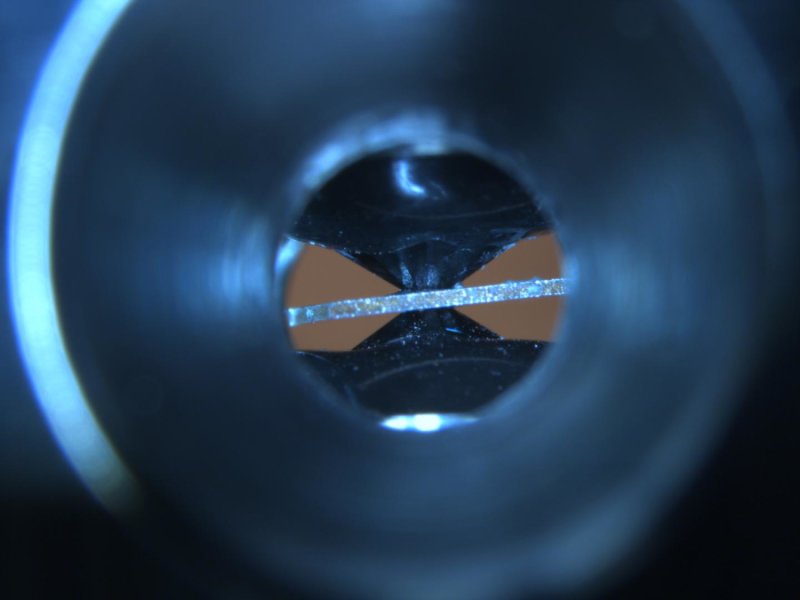Mantle minerals offer clues to deep Earth’s composition
 Using a diamond anvil pressure cell and laser heating – to duplicate the mantle’s unimaginable pressure and heat – MSU scientists have a better idea what minerals comprise the mantle. Courtesy of MSU.
Using a diamond anvil pressure cell and laser heating – to duplicate the mantle’s unimaginable pressure and heat – MSU scientists have a better idea what minerals comprise the mantle. Courtesy of MSU.
Scientists now have a clearer picture of the Earth’s mantle, thanks to research published in the current issue of Nature Communications. Hawai’i Institute of Geophysics and Planetology (HIGP) affiliate researcher Dongzhou Zhang is a co-author.
The biggest challenge of studying the planet’s middle, biggest layer — sandwiched between its iron core and thin surface that hosts its living creatures — is that it can’t been seen. It’s comparable to a patient getting a CAT scan, and the doctor being able to see dark and light spots indicative of healthy tissue and tumors. Instead of a CAT scan, however, geologists use seismographs. But since they can’t dive down to explore what the “spots” actually mean, they have to decipher what the difference in wave frequencies are telling them.
Susannah Dorfman, Michigan State University geoscientist and the study’s co-lead author likens her lab and the analysis her team conducts to chefs in a test kitchen. The main ingredient on this menu, though, is bridgmanite — Earth’s most-abundant mineral. This mineral is estimated to make up more than 50 percent of the Earth. While ubiquitous in the mantle, bridgmanite is quite rare on the surface. How rare? Its existence has been theorized and manufactured in labs since the ’70s. But it wasn’t until 2014 that a speck of natural bridgmanite was found in a meteorite, its crystal structure mapped and officially christened.
Read more about it in ScienceDaily.

